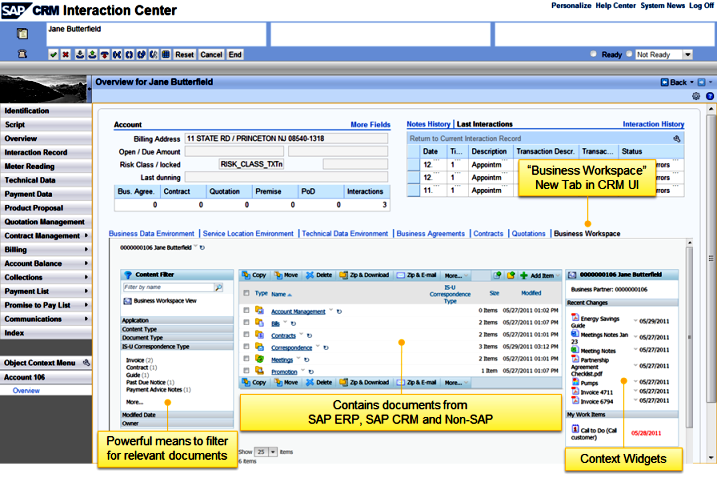To make it easier handle all kinds of sales, marketing, and service related transactions across different communication channels, SAP CRM has been provided with an Interaction Center with all necessary tools. Therefore, if you are an agent, you can access all kinds of reporting, maintenance, and administration tools, thus making the Interaction Center more efficient.
There are quite a few key functions that are associated with the Interaction Center. Here they are:
- Telemarketing to help marketing organizations tighten their efforts using the Interaction Center for making the best use of call lists, promotions, additional channels, and agent scripts.
- Help provide a single solution to queries related to Telesales for initiating outbound qualify leads, customer contacts, creating product proposals and quotes, providing product information, and identifying customer needs for closing a deal.
- To handle various services within the interaction center including complaints, assisting with returned materials, answering technical questions, assisting with exchanges, addressing customer concerns, etc.
- Providing a central point of contact through Employee interaction center management with highly useful customer relationship management techniques, so employees have easy access to kinds of information they need.
Product capabilities within SAP CRM interaction center
For service:
To provide various tools to the employees, so they are able to provide high-quality service to customers during their first contact with the interaction center.
- Help desk support – To make use of the information available in the knowledge base for providing an initial assessment based on customer issues and tracking the status of any pending issues.
- Complaint management – Making it easy to process customer returns and financial credits. This section can also be used for managing escalations.
- Customer support and service – Give customer support representatives all data needed to solve problems without involving transfers at any stage.
For Marketing:
Identifying qualified leads and then retaining them through interaction center’s marketing capabilities.
- Campaign execution – Extending the campaign impact by making them run on various channels, including e-mail and outbound dialing.
- Personalization – Identifying the right products and presenting them to the right customers.
- Lead management – Using surveys and other means to sort out qualified leads and have them transferred to qualified sales agents to improve the sales conversion rates.
For Sales:
Helps maintain a stable sales pipeline by utilizing the capabilities of interaction center to qualify leads, get orders, and complete sales.
- Contact and account management – Get accurate and complete information of customers.
- Activity management – Have the business activities and follow-up tasks triggered and tracked, and then have them allocated to correct resources.
- Opportunity management – Keep a note on different sales opportunities, including key players, progress made, and milestones achieved.
- Quotation and order management – Creating proposals, determining price, configuring products, tracking orders, etc for managing sales order.
Interaction Center Analytics:
For monitoring agent performance and interaction center whilst identifying trends and speed up problem-solving using powerful analytics.
- Process-based analytics – Creating metrics and monitoring them for important business processes like first-call resolution rates and items completed by an agent.
- Communication analytics – Creation and tracking of important interaction center metrics like response speeds and average handling time.
- Blended analytics – Establishing metrics that help in blending various elements.
See the Screen shot of Interaction Center
